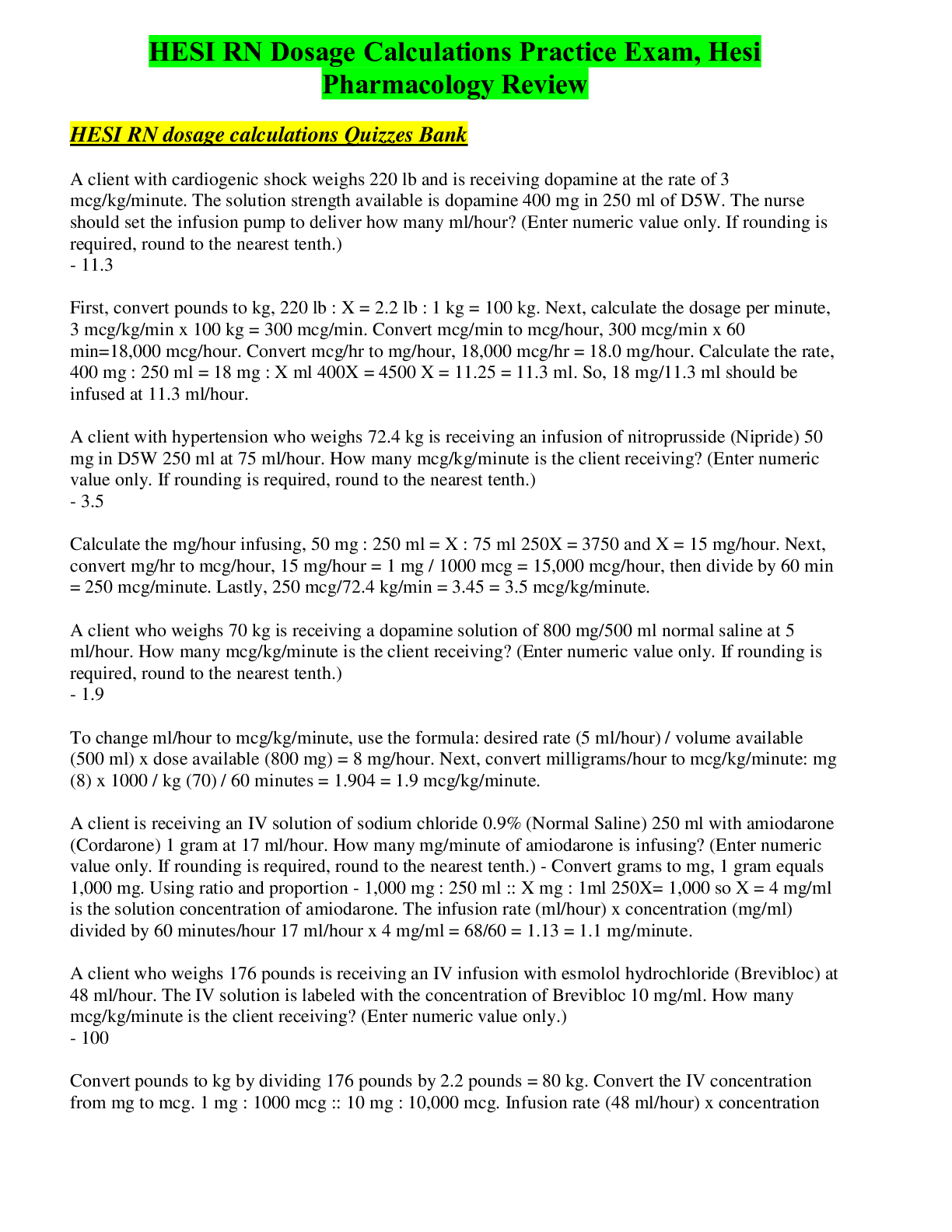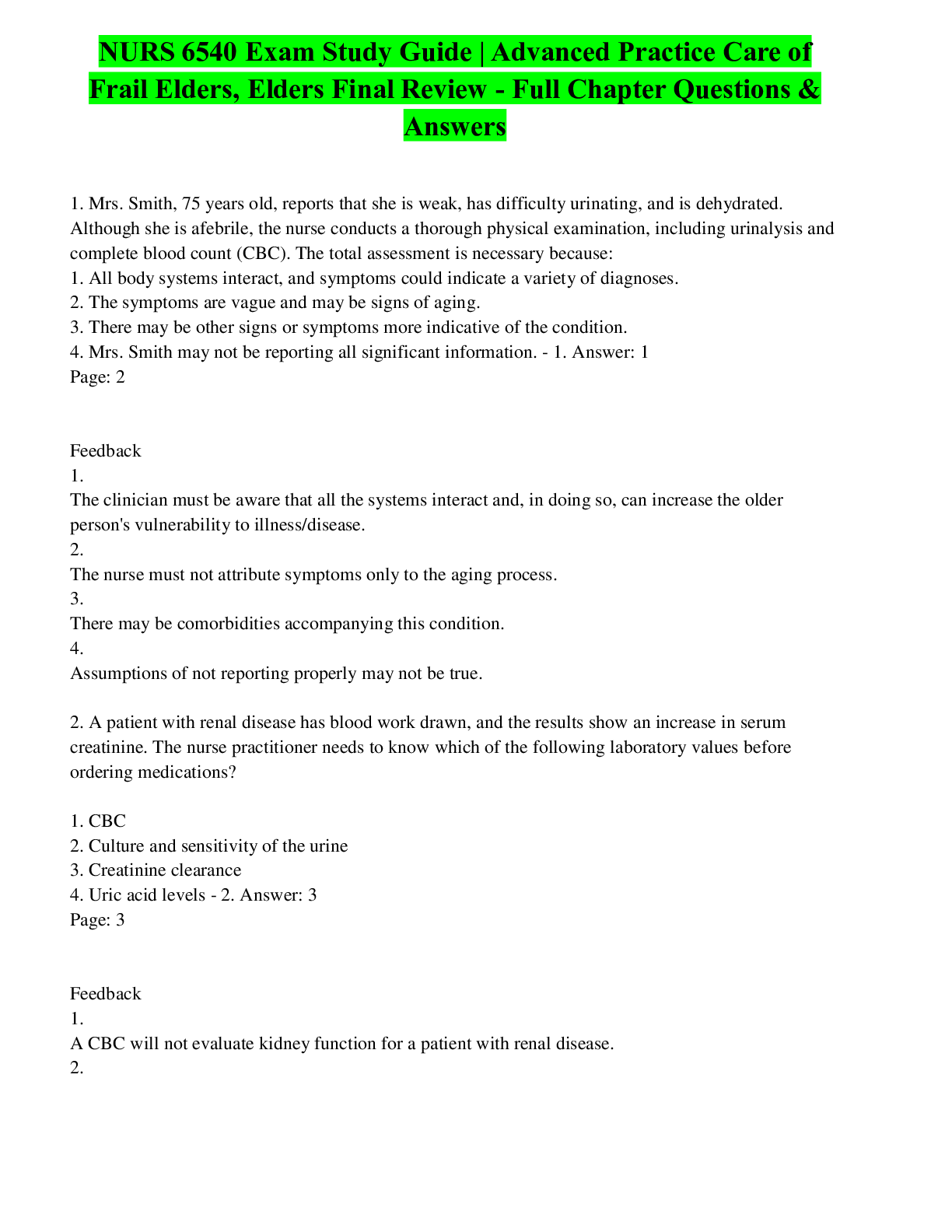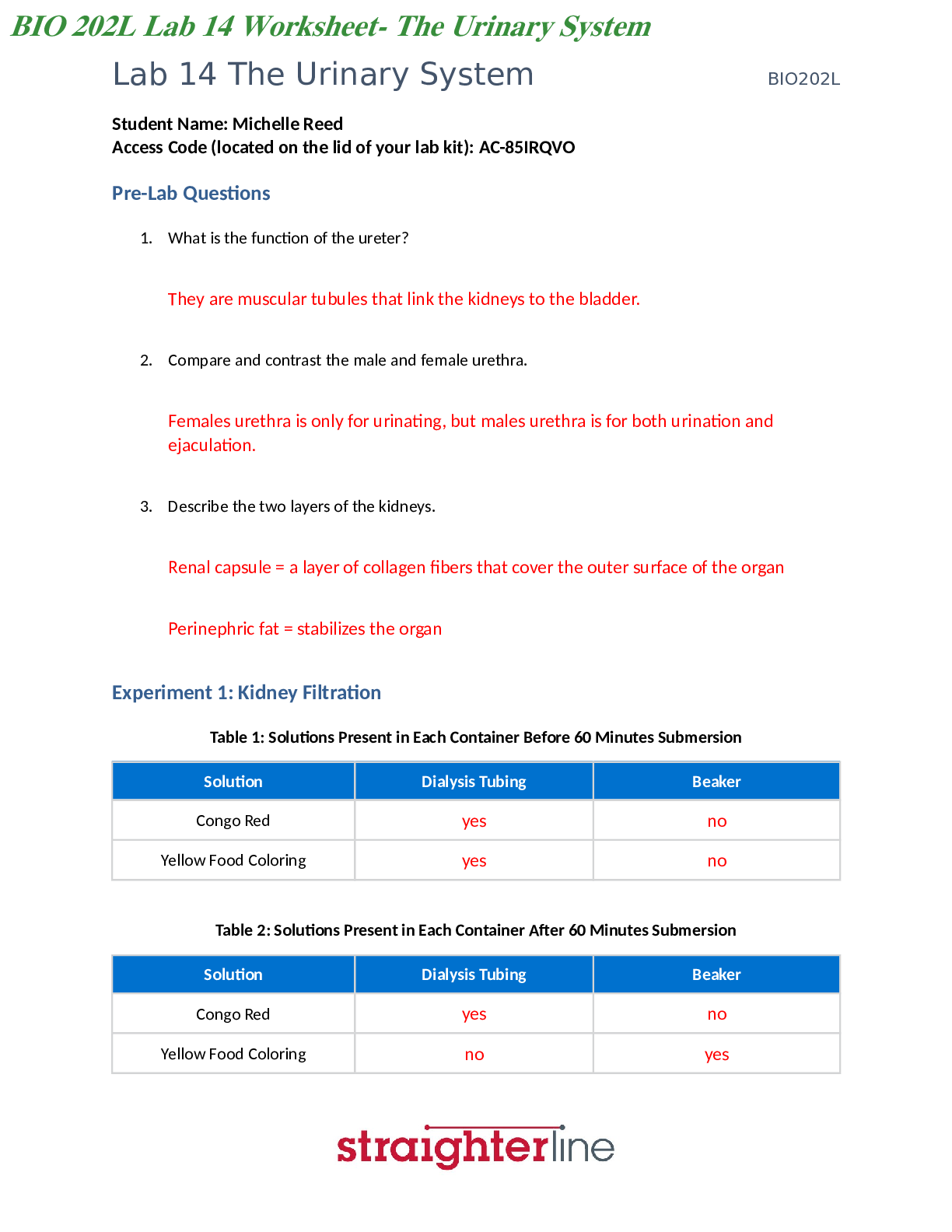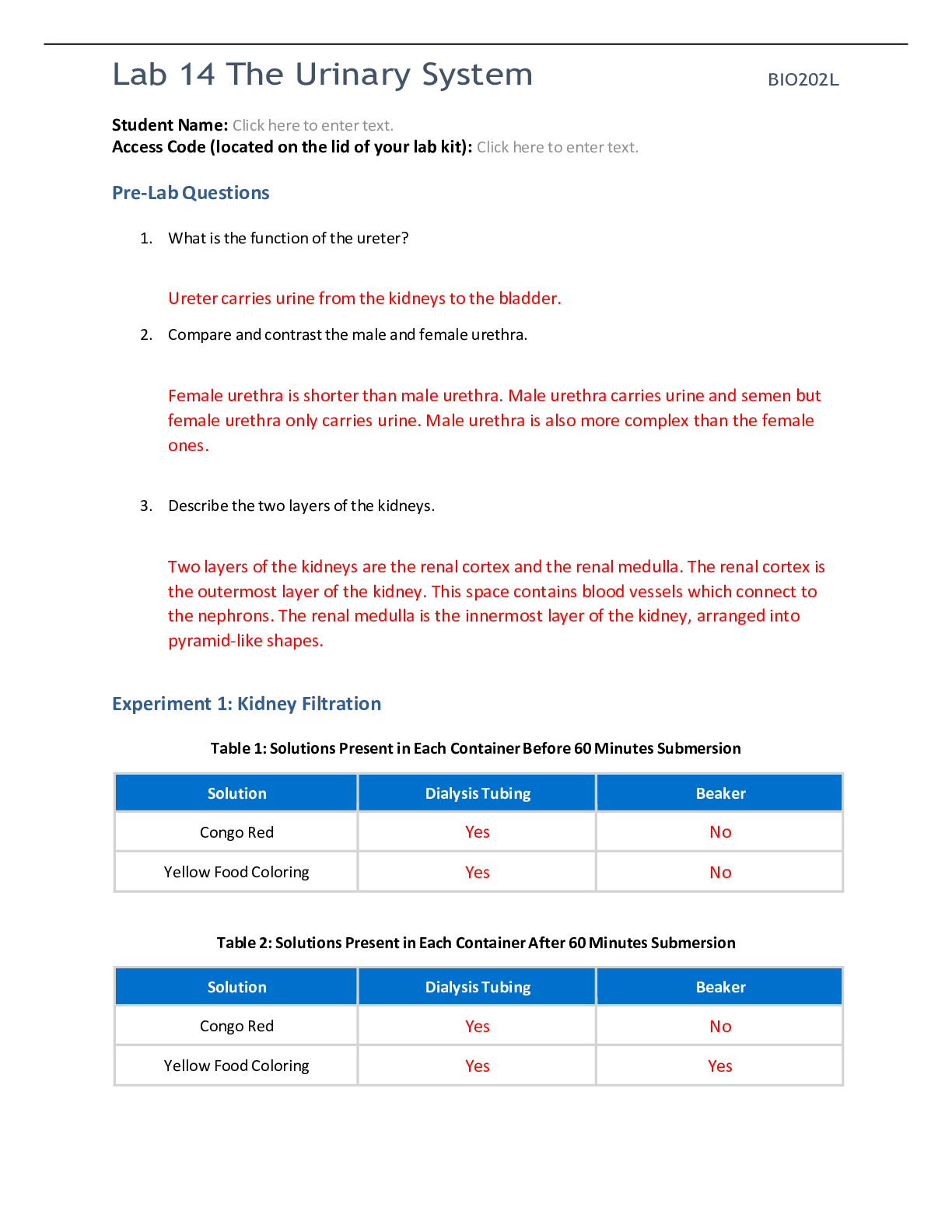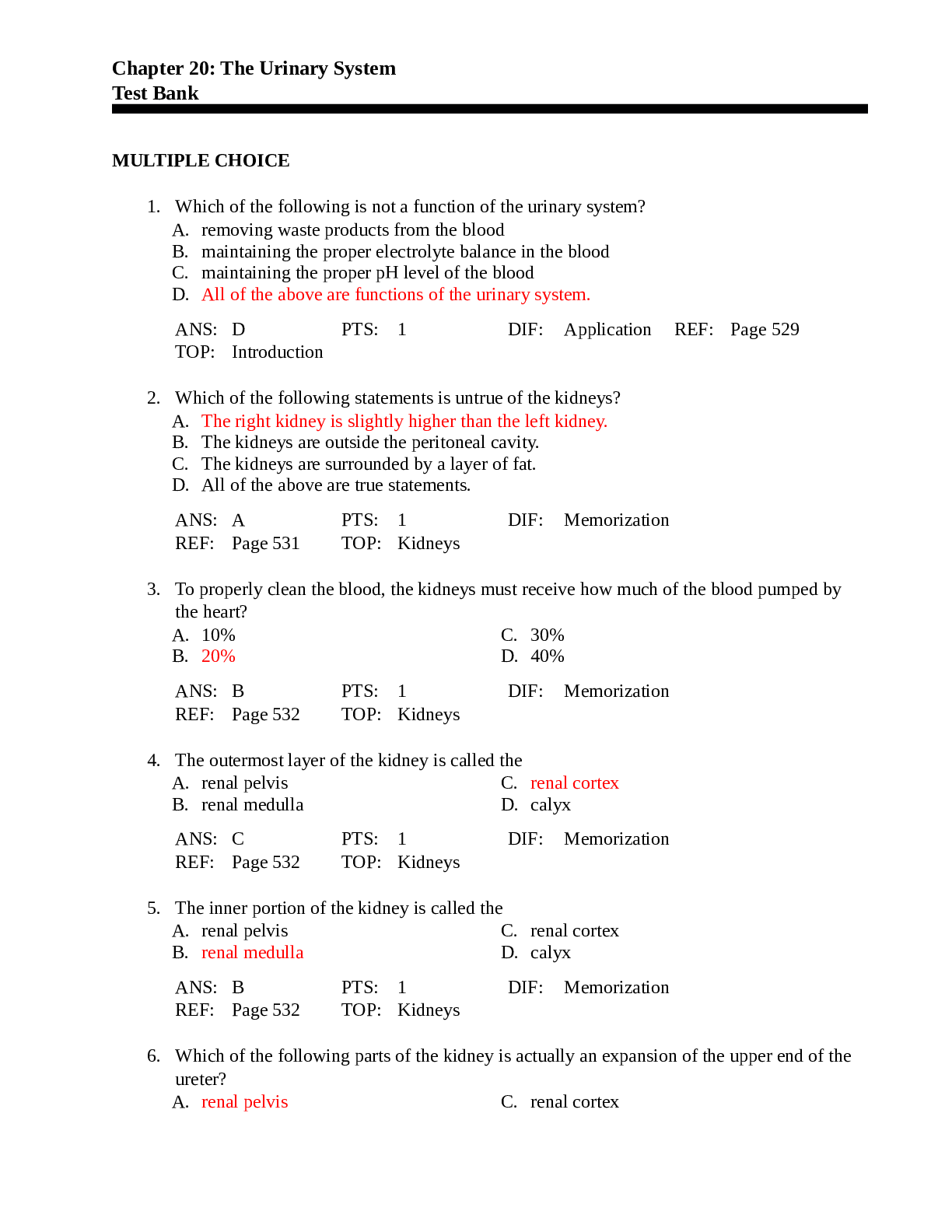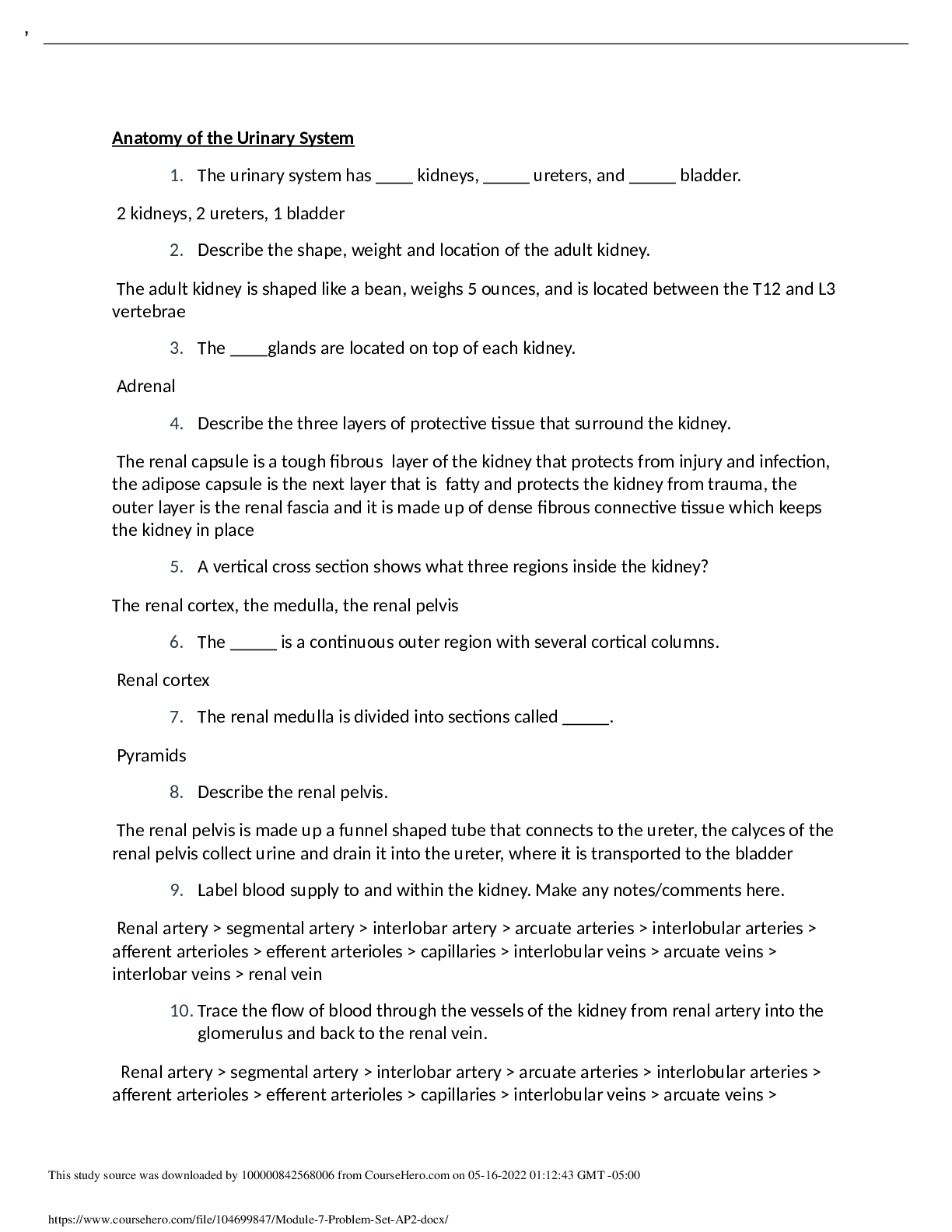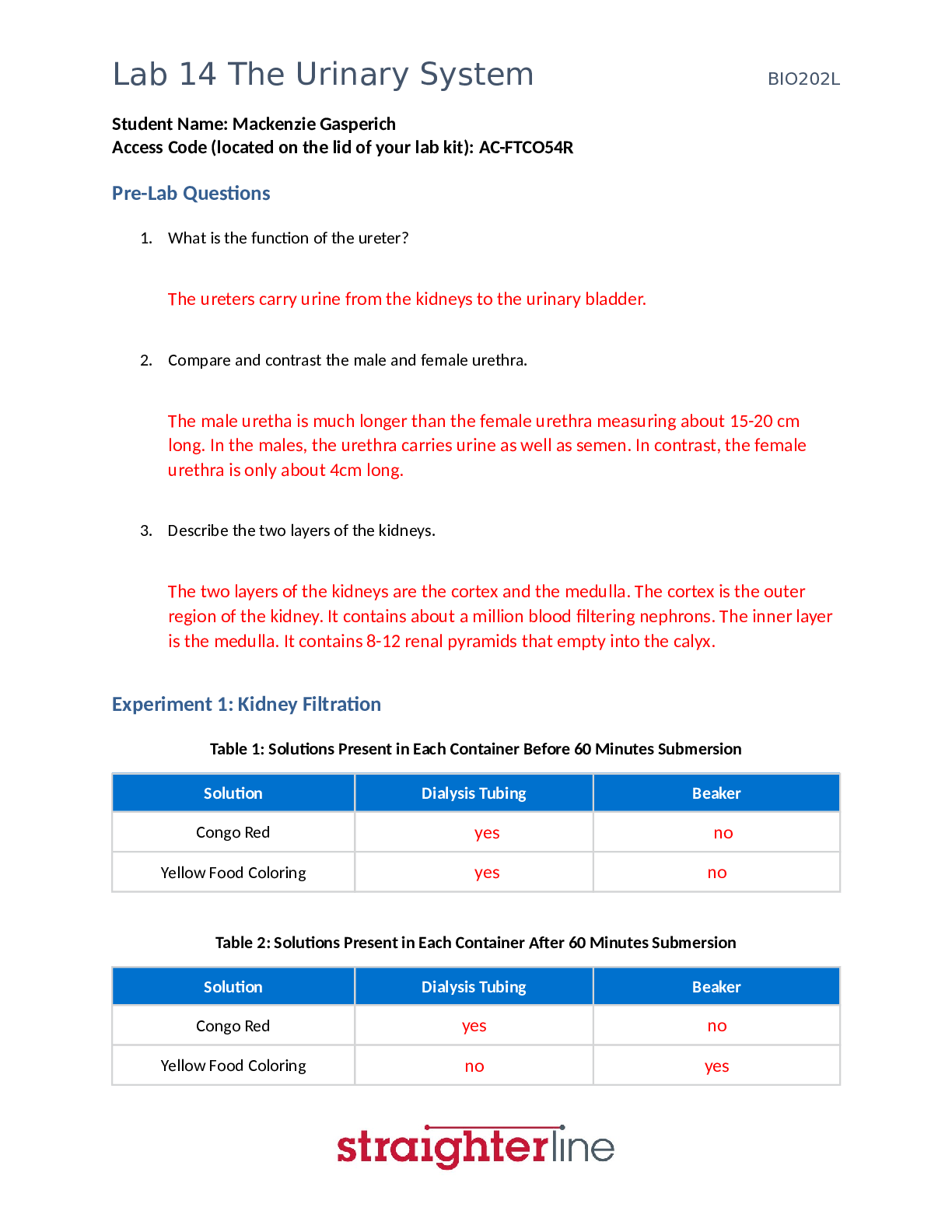*NURSING > EXAM > BIO102/ BIO 102 Unit 8 The Urinary System Assignment (answered) / BIO 102 Unit 8 The Urinary System (All)
BIO102/ BIO 102 Unit 8 The Urinary System Assignment (answered) / BIO 102 Unit 8 The Urinary System Assignment 1
Document Content and Description Below
BIO102/ BIO 102 Unit 8 The Urinary System Assignment (answered) / BIO 102 Unit 8 The Urinary System Assignment 1- Characterize the roles of each of the parts of the urinary system. (Kidneys, nephrons,... ureters, urinary bladder, and urethra) 2. Trace the flow of blood through the kidney and describe how blood is filtered in the kidney nephron. 3. Provide symptoms of kidney failure and describe the normal versus abnormal urine composition. (normal range of pH, osmolarity, and volume) 4. List some of the solutes filtered, secreted, and reabsorbed in different parts of the nephron. 5. Describe the role of a portal system in the kidney. 6. Explain how urine osmolarity is hormonally regulated and describe the regulation of major ions by the kidney. 7. Summarize the role of the kidneys in maintaining acid-base balance. 8. Compare and contrast blood plasma, glomerular filtrate, and urine characteristics. 9. Compare and contrast male and female urethras. 10. Describe the micturition reflex. 11. Describe the external structure of the kidney, including its location, support structures, and covering. 12. Identify the major internal divisions and structures of the kidney, identify the major blood vessels associated with the kidney. 13. Name structures found in the cortex and medulla, describe the physiological characteristics of these areas and compare and contrast the cortical and juxtamedullary nephrons. 14. Describe voluntary and involuntary neural control of micturition. 15. Discuss the function of the peritubular capillaries and vasa recta. 16. Identify the location of the juxtaglomerular apparatus and describe the cells that line it, and the function of this structure. 17. Describe the histology of the proximal convoluted tubule, loop of Henle, distal convoluted tubule, and collecting ducts 18. Describe glomerular filtration rate (GFR), state the average value of GFR, and explain how clearance rate can be used to measure GFR, predict specific factors that will increase or decrease GFR 19. State the percent of the filtrate that is normally reabsorbed and explain why the process of reabsorption is so important 20. List common symptoms of kidney failure, and discuss the aging kidney and its function. 21. Describe how each of the following functions in the extrinsic control of GFR: renin-angiotensin mechanism, natriuretic peptides, and sympathetic adrenergic activity 22. Describe how each of the following works to regulate reabsorption and secretion, so as to affect urine volume and composition: renin-angiotensin system, aldosterone, antidiuretic hormone, and [Show More]
Last updated: 1 year ago
Preview 1 out of 14 pages
Instant download
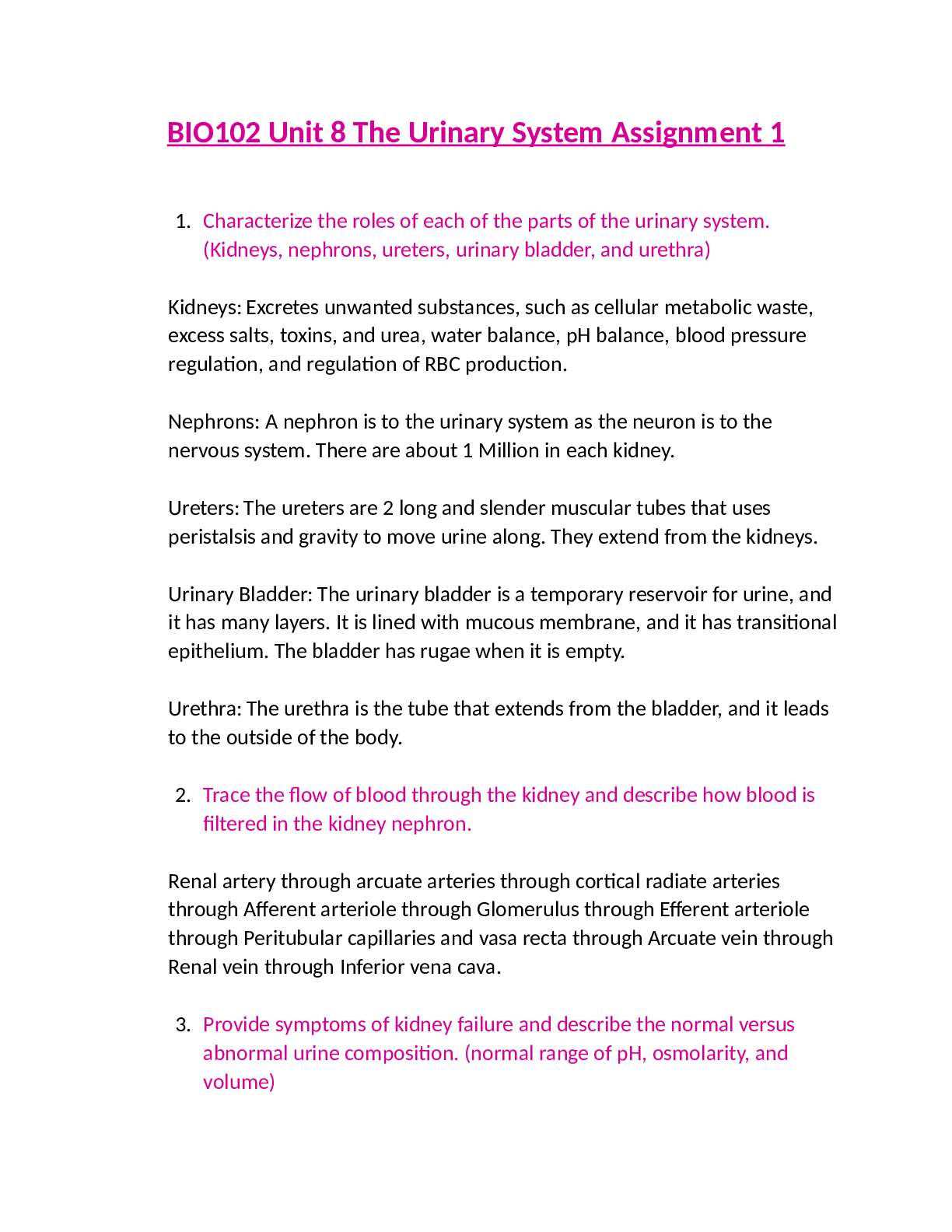
Buy this document to get the full access instantly
Instant Download Access after purchase
Add to cartInstant download
Reviews( 0 )
Document information
Connected school, study & course
About the document
Uploaded On
Oct 16, 2021
Number of pages
14
Written in
Additional information
This document has been written for:
Uploaded
Oct 16, 2021
Downloads
0
Views
32

 Pediatrics Practice Exam-Answered.png)
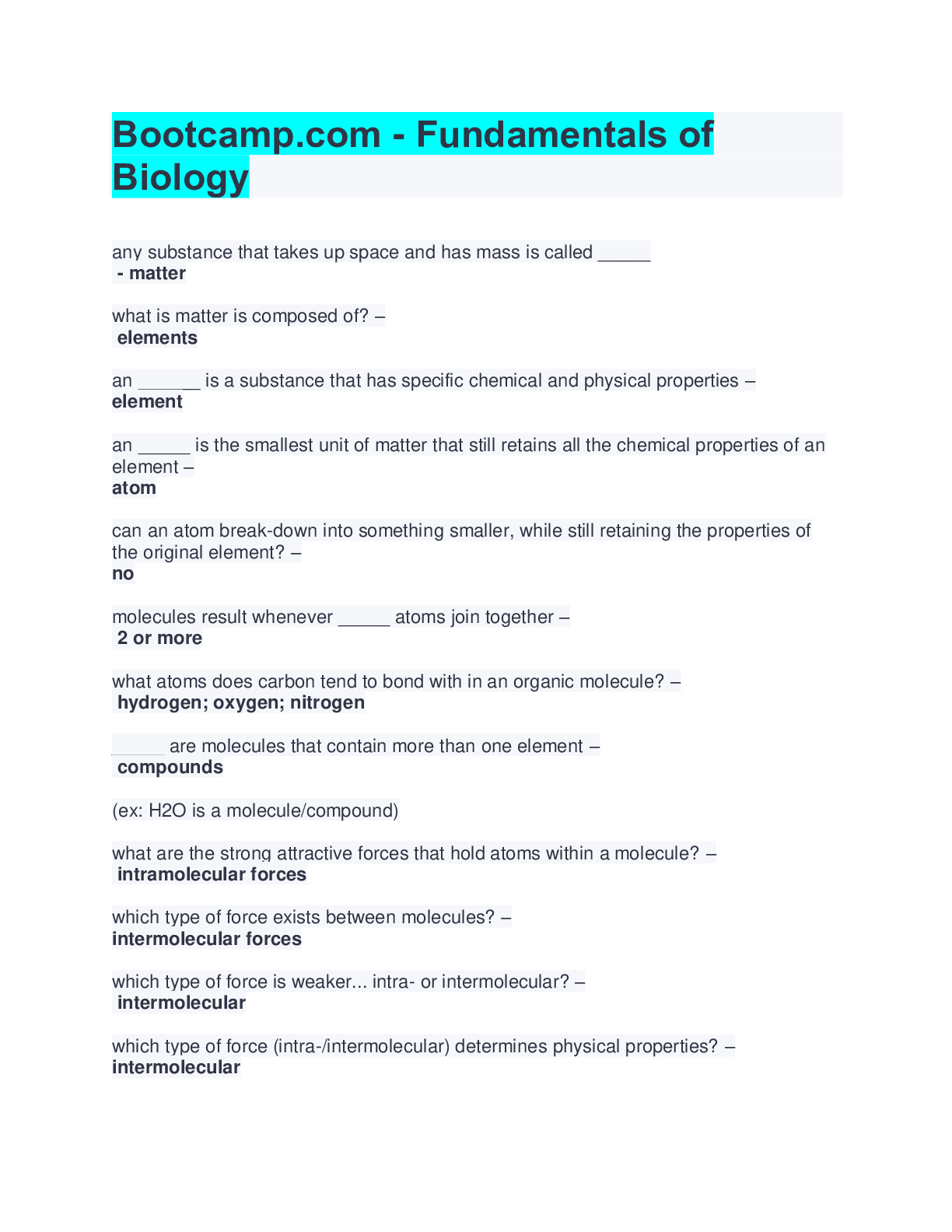
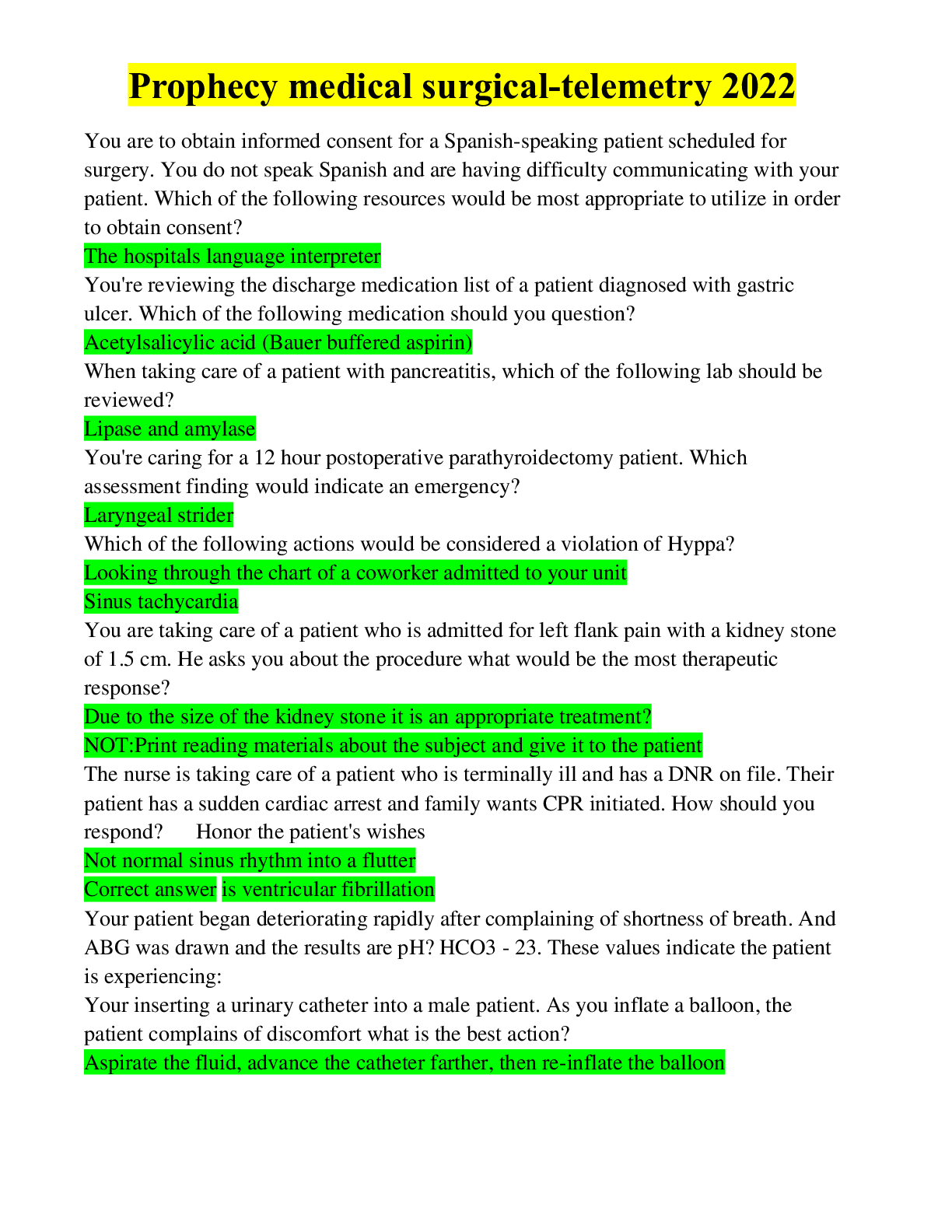
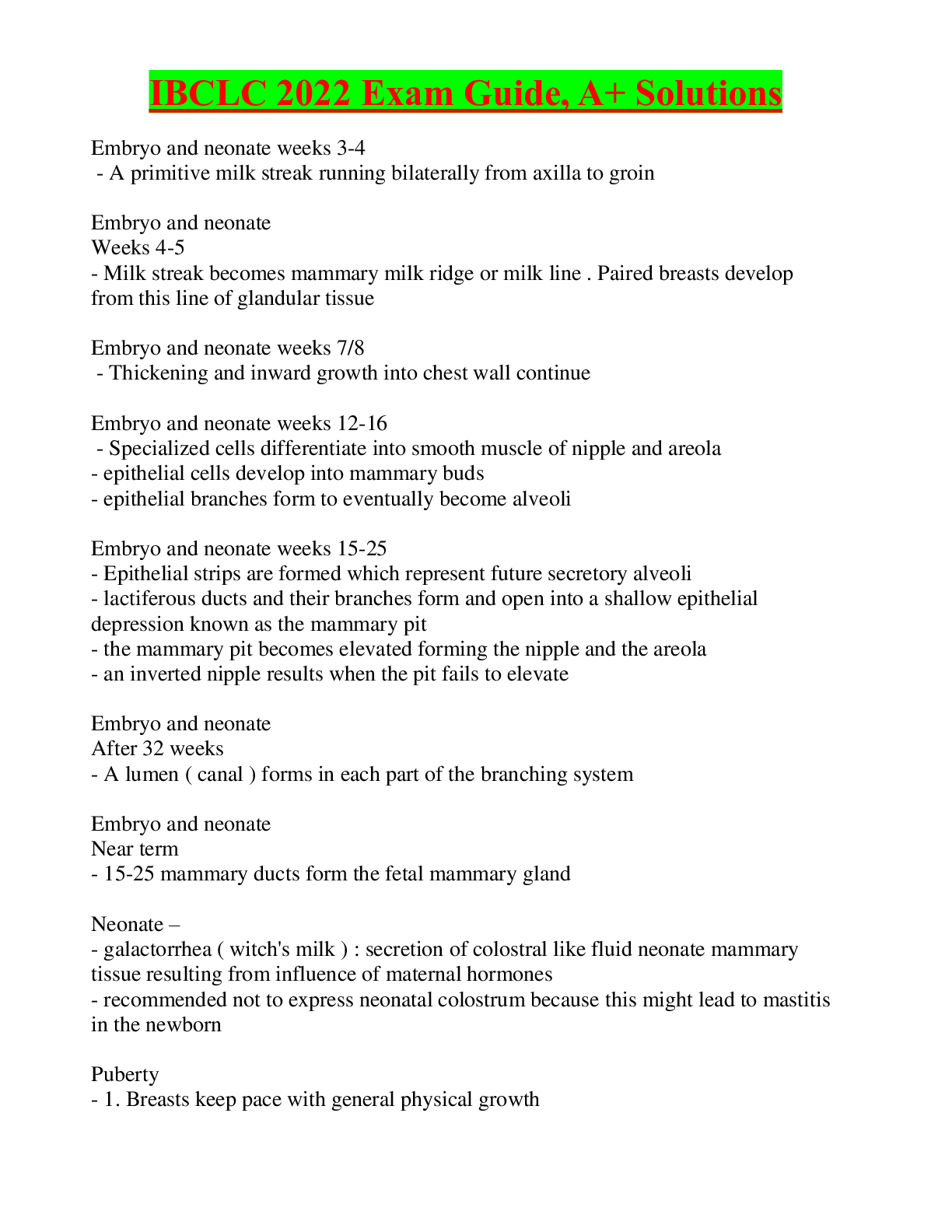
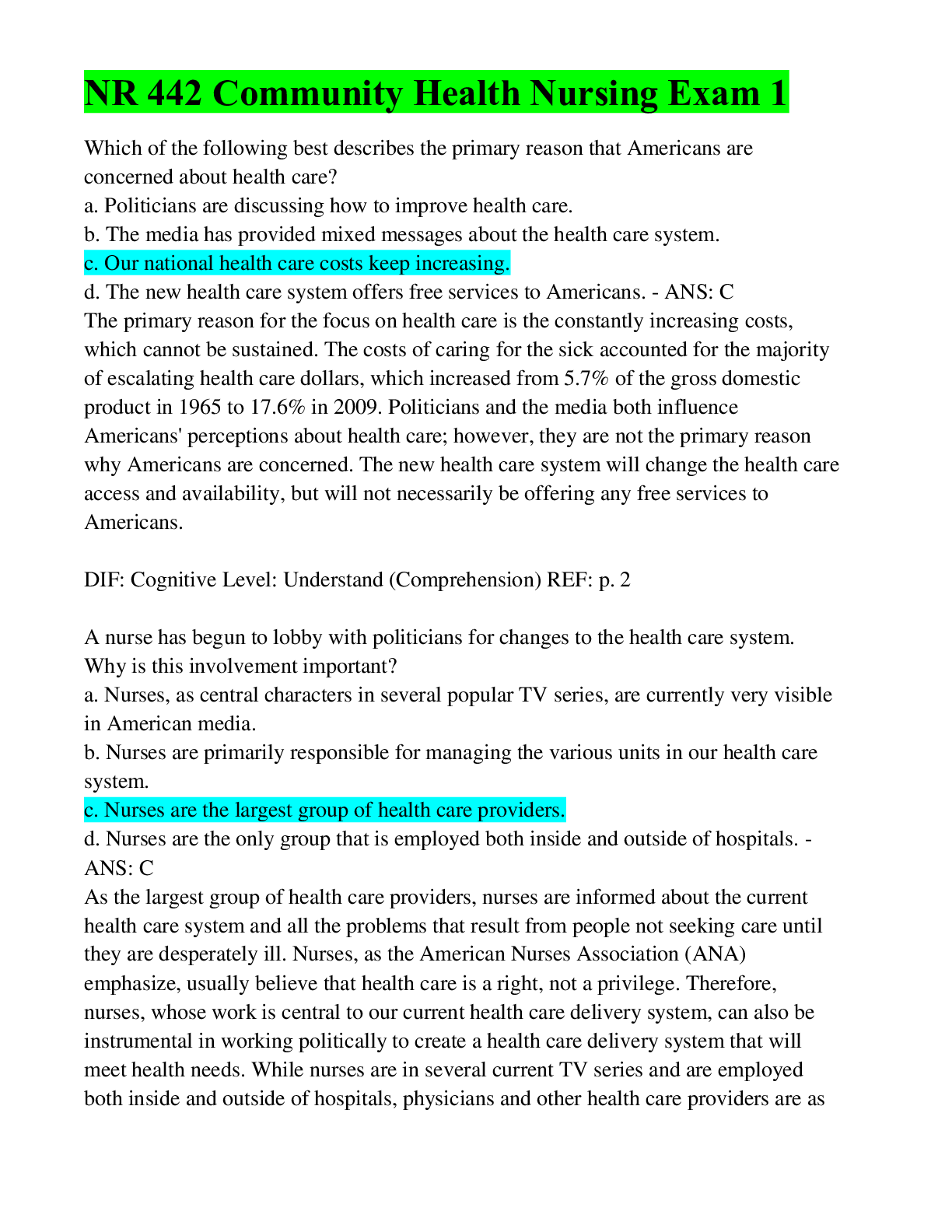
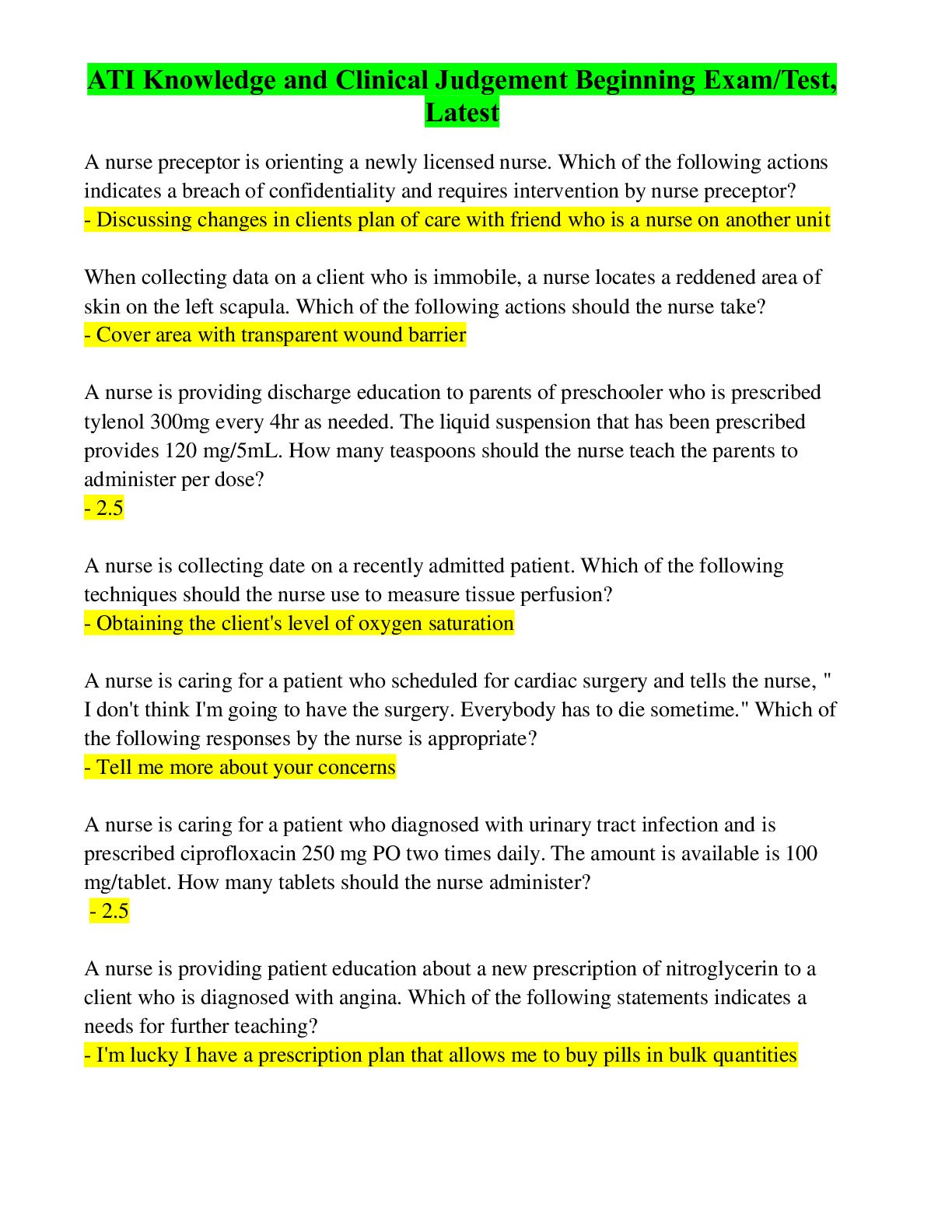
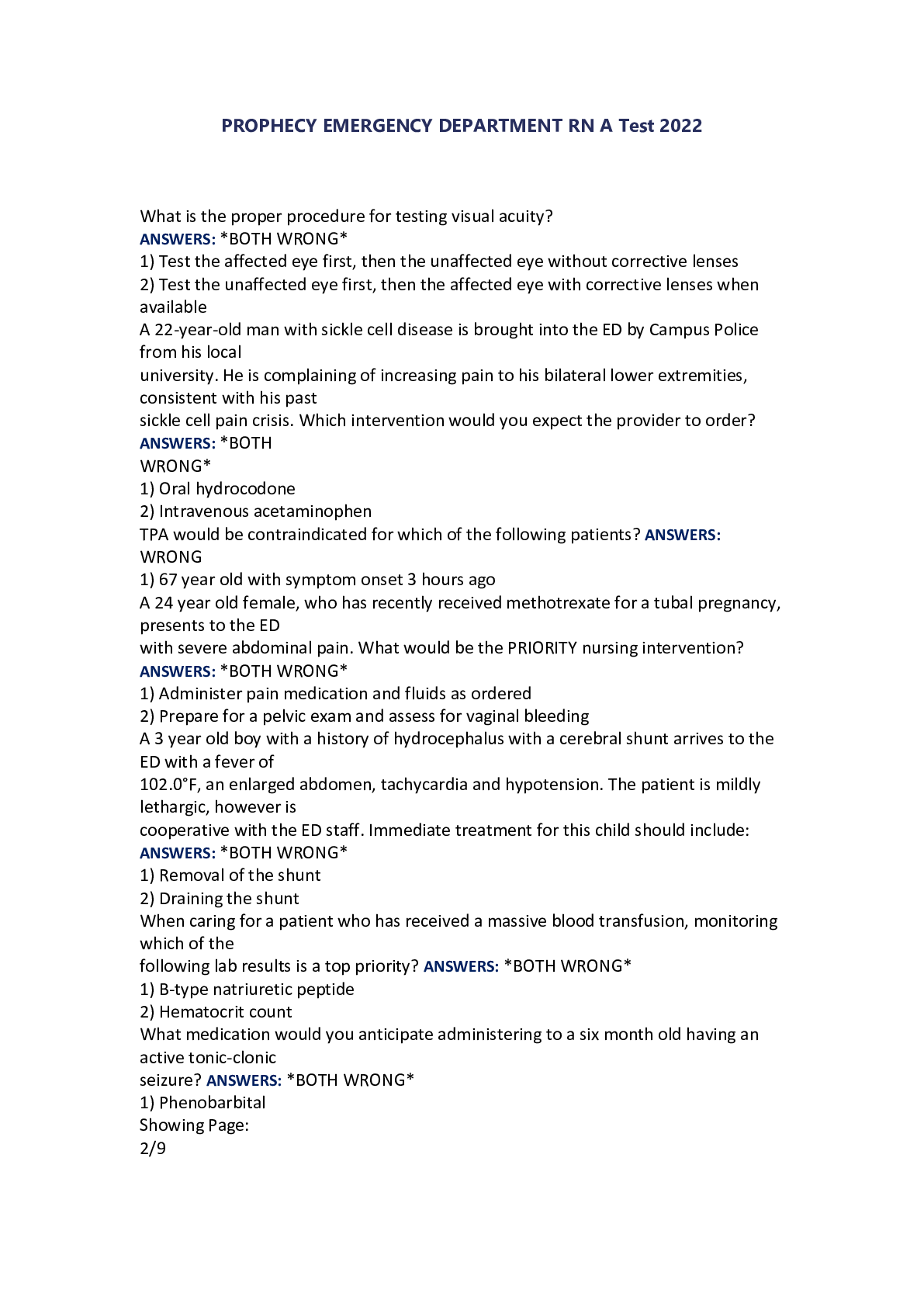
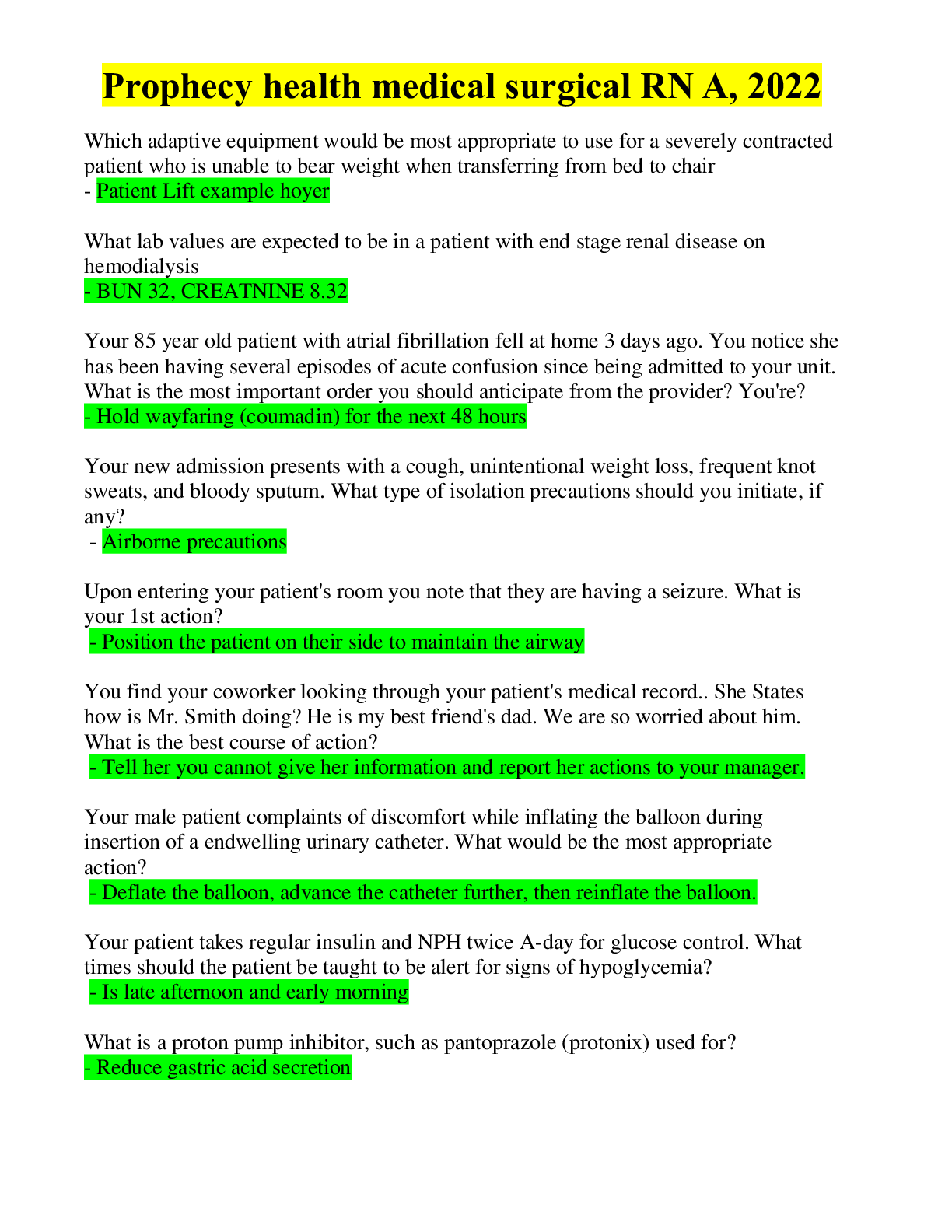
 Exam, Answered.png)
 Exam 1.png)
